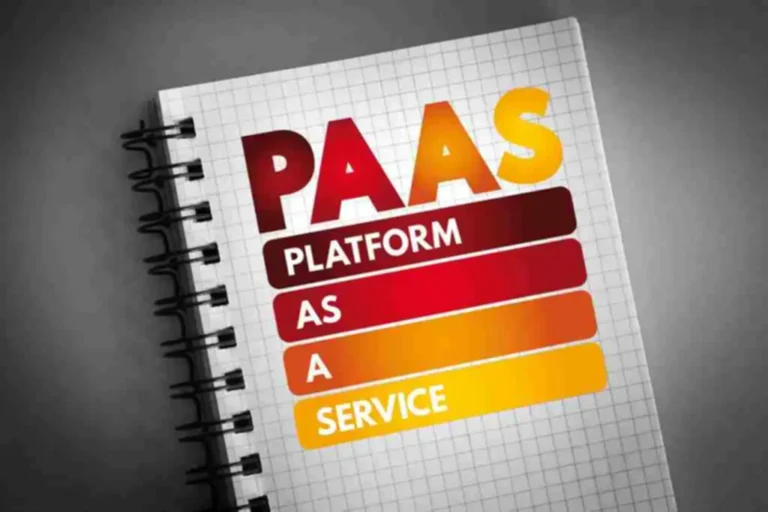Advantages and Disadvantages of PaaS (Platform as a Service)

Internet was used by businesses as a place to sell their products/services or as a marketing playground before. Although it obviously meant they had to create their own environments online, those were rather primitive. It gradually became simple and accessible, which enabled the PaaS model to become popular and universal.
PaaS (Platform as a Service) is a model that supports countless online services that provide a place, resources, and solutions to create your own, highly customized online environment. These are creation kits, and you can use them to create apps, websites, and other forms of an online presence.
PaaS explained
It must be evident to any rapidly growing business that an online presence is highly beneficial and lucrative. You must have sale and marketing solutions online that belong to you, otherwise, you’ll lose potential results and maybe even break your business.
A proper online presence consists of:
- Applications (browser/mobile apps)
- Websites (online stores, official informative websites)
- Marketing solutions (ads, campaigns, and so forth).
You obviously can’t just start making these right away. They require expertise and technical solutions. And even then, quality control should be in order because the internet is a highly competitive place – you don’t want your app to look inferior compared to the competitors.
So, you’re given several options. The two most common ones include manual creation and PaaS. Creating your online presence manually means you’ll have to find programmers, website-building solutions, coding solutions, pick proper resources, and compile all of this mess into one cohesive piece.
Platform as a Service, however, has all of that covered. PaaS services commonly give you all the necessary software you need to create an app/website, hardware that supports this software, as well as a user interface (UI) that allows you to have a much more comfortable experience creating your business environment.
PaaS is a means to achieve your goal without dispersing and trying to collect all the necessary stuff from various sources.


We are confident that we have what it takes to help you get your platform from the idea throughout design and development phases, all the way to successful deployment in a production environment!
Origins of PaaS
PaaS must feel like a sound solution to many problems after this quick introduction. However, it’s likely still confusing because it’s not a technical solution that can be strictly defined and explained – it’s a model of selling your hardware & software to people who need it, so that they can create apps and other things your products are good for creating.
As a result, you get a ‘platform service’ – an all-encompassing solution that allows even the most uninformed users to create a sound online presence simply because it’s built to be comprehensive and effective by knowledgeable people. It saves time and effort on anyone’s part big time. Examples of such platforms include WiX, WordPress, and Flippet.
All of these provide a comfortable environment for the creation of websites, blogs, marketing solutions, and apps. They operate on a pay-as-you-go basis, meaning you regularly pay for the privilege of using these. Naturally, there are many platforms, and they all have their own pricing policies, which aren’t too costly nowadays.
This system hasn’t been created on its own. It’s actually inspired by the Hardware as a Service & Software as a Service models that preceded PaaS. These follow the same principle – they sell you special kits of hardware or software precisely for your needs, which is much simpler than if you’d scrounge all over for them.
Upsides of PaaS
There are many good reasons to try these PaaS-based solutions, and some of them aren’t as apparent as you’d think. There are many subjective upsides that businesses usually mention when asked about these platforms, and that includes availability, flexibility, and so forth.
While it’s true, PaaS has other, more objectively better advantages worth checking out.
- Cost-efficiencyYou might think that a carefully selected package of solutions would be costlier compared to the solutions you could find by yourself and use semi-separately. Actually, no. Today, many of these platforms are cheap and affordable. There’s a lot of competition in this area right now, which drives the prices down.If you’d try to fuse together something similar, you would have to pay for all of these separately (which often means that one individual tool would be costlier than the entire creation kit), in addition to hiring additional personnel so that you could actually make use of your new tools.UI is a very nifty thing. It’s designed specifically so you can put two things together by simply clicking buttons rather than piling up a code.
- Time-efficiencyIn addition to being able to save on tools and other costs, you can also save your time. It can often be even more valuable than your money. So, instead of trying to find proper tools and people to create an app, you could focus more on the chief activities of your business or stuff that actually needs your attention.Do that and you’ll win back the money you spent on an app-builder in no time.Granted, you’ll still need to spend time working with the app or at least controlling the creation process. Compared to the mountain of hours you’d spend figuring out how to even approach app-building, it’s nothing. All the heavy thinking is done for you, and that’s one of the chief merits of working with one of these platforms.
- SimplicityWhile no one will tell you that working with an app-builder or website-builder is easy (you still need to figure them out and work your idea into something functional), these are made precisely for people who don’t know much about website layout, coding, as well as hardware and software maintenance.These ‘builders’ aren’t professional solutions. They are meant for people who don’t want to bother with these advanced topics. If you have an idea and time enough to poke every button, you will eventually create something.
- ScalabilityScalability is basically a process of extending your infrastructure to accommodate more users. Scaling your business using the usual method is a pain because it requires you to acquire more hardware, install, and maintain it. Without it, your presence won’t be able to process so many requests.You could acquire hardware via some HaaS service, rent it, and have it be wired to your system remotely. But at this point, you might as well use PaaS because they all have that and comfortable building solutions.You’ll still have to pay for this scalability, but it’s likely going to be cheaper than doing it the old way. Moreover, you’ll spend infinitely less money on that.
Downsides of PaaS
It’s a great system, no doubt about that. However, like everything, it has its flaws. It’s no panacea, in some cases, you might want to work without these solutions, and in order to understand that you need to first compare the pros and cons of PaaS. You know the merits. As for the shortcomings – there are a few of them.
- Provider dependencyOne of the unappealing parts about having to use the PaaS systems is that you’re completely dependent on your provider. If they fail and decide to close operations, you will also fail because they are likely responsible for keeping your online presence (or part of it) up. And these failures aren’t even something you can control.For this reason, it could be vital to have several different platforms for your various apps/websites. But if you can’t do it, the other option is to find a service that allows you to host your own servers, while still keeping the building functionality. That slightly reduces your vulnerability, but it’s harder to find such services.
- Issues with securityKeeping your data safe is obviously something you want to uphold as much as possible. But how do you keep your data secure if a service has direct access to it? They don’t usually keep your personal or client data, but how do you know you’re working with a trustworthy platform?Moreover, the danger is not just in your provider, but also people who can hack them and steal your data for gain. It happened before, and that’s why you need to choose a service carefully, make sure they don’t have access to confidential information, and take their security very seriously.
- Continuity of hardwareIt’s a minor problem if you didn’t start your app-building yet. If you already have some existing hardware, you’ll have to connect it to whatever your PaaS provider has, and it may turn out that they are incompatible. Thus, merging your business environment with the new system can be problematic.The solution is to look for services that provide 100% compatibility with your own infrastructure. If you’re already deep into developing your new online presence, you will have to consult the provider on this issue.
In conclusion
PaaS is a miracle system in many ways. It’s a part of the bigger XaaS (Everything as a Service) approach that basically means that all of the tools that you need to achieve your goal are stored in one package, and that this package can be readily reached online.
Platform as a Service is one of the more popular manifestations of this concept because it is comfortable and simultaneously absolutely critical to businesses. There are reasons to not use services of this sort, but they are overshadowed by the sheer usefulness of these solutions.
If you decided to not use PaaS because it’s not your cup of tea, it’s alright. But you still need to develop your online presence, and there are increasingly more and more services that help you do it. If you don’t like PaaS, you could still use HaaS, SaaS, or IaaS to help you along the way.
Top Articles
Embracing Automotive Digital Transformation to Accelerate Innovation
I am here to help you!
Explore the possibility to hire a dedicated R&D team that helps your company to scale product development.






